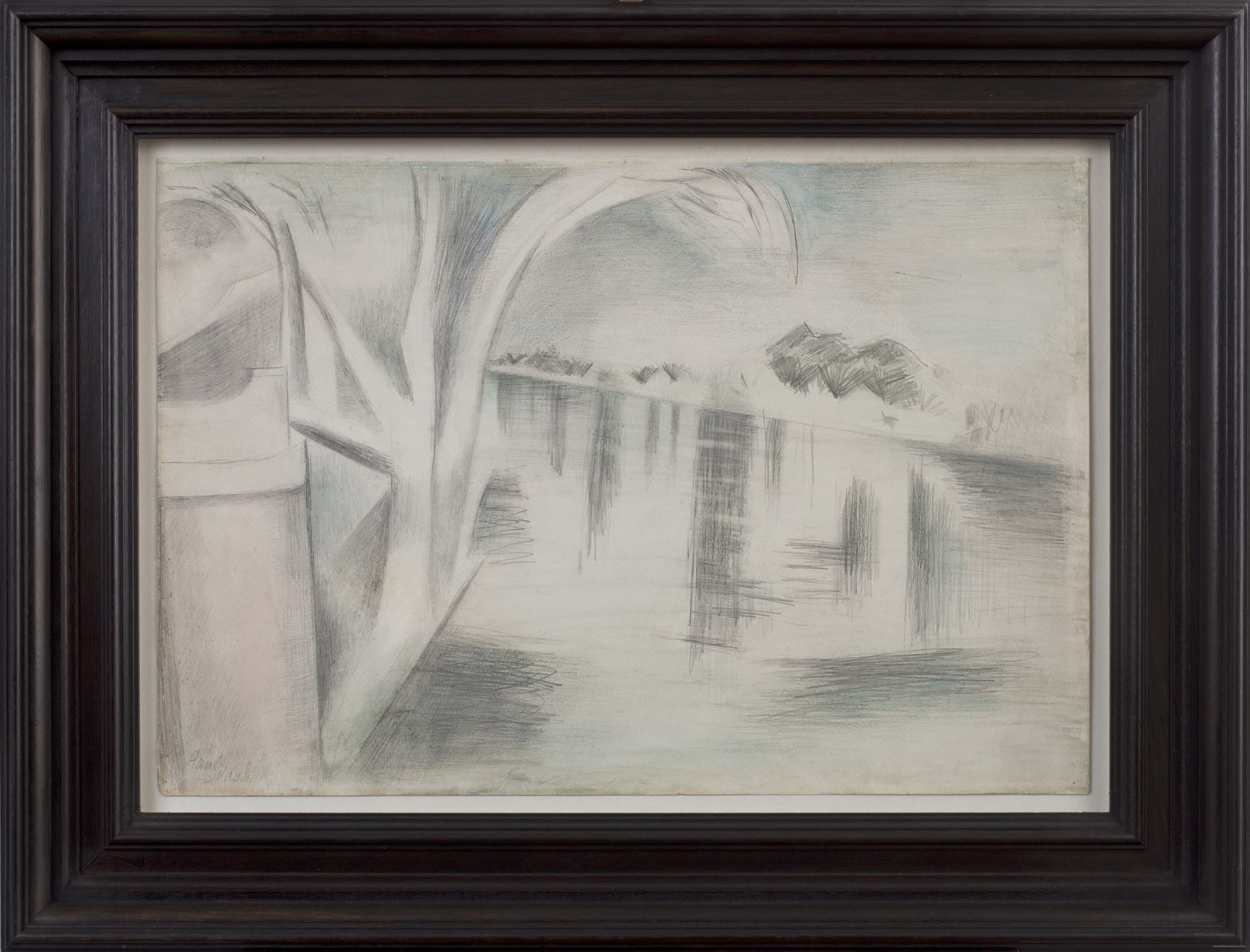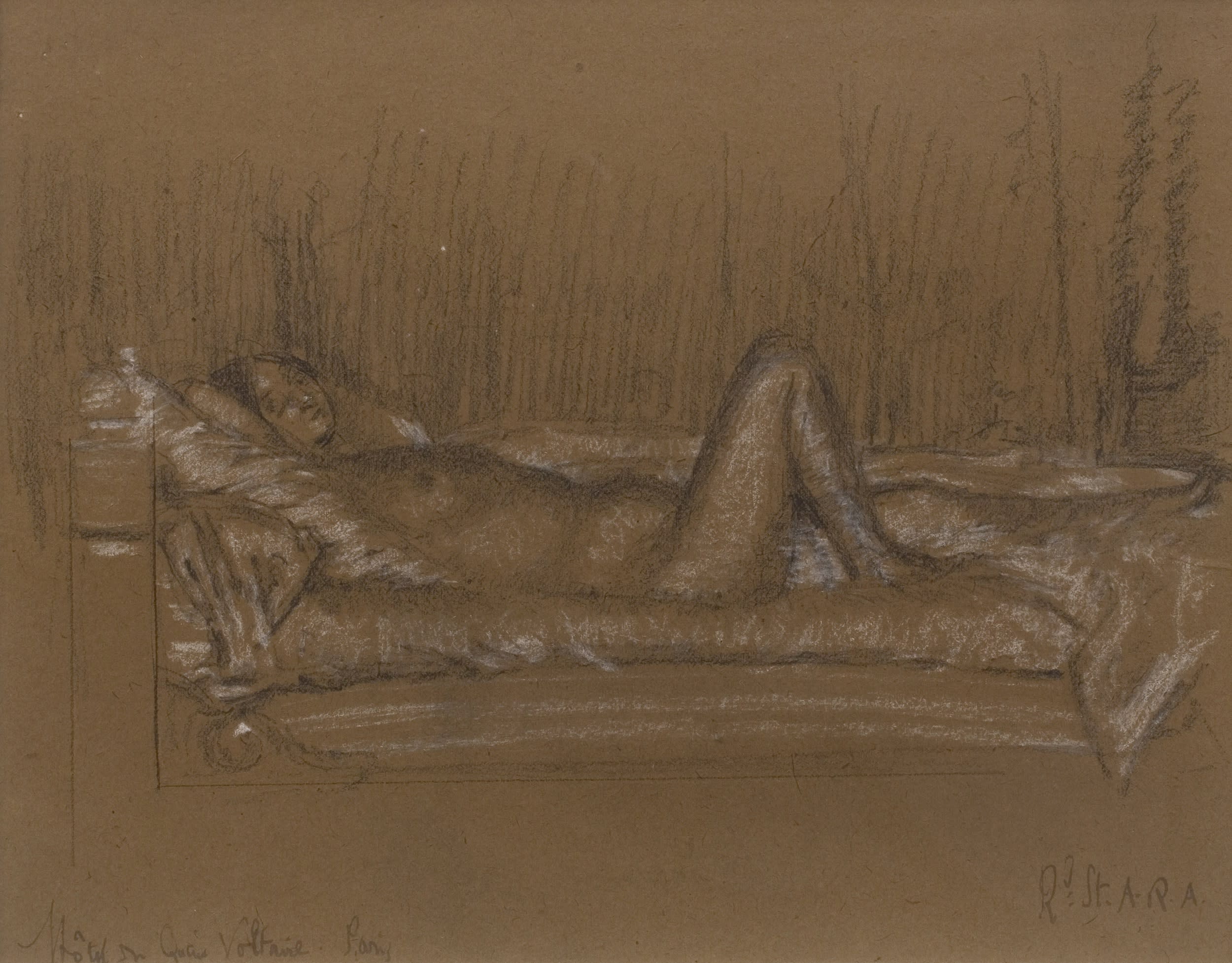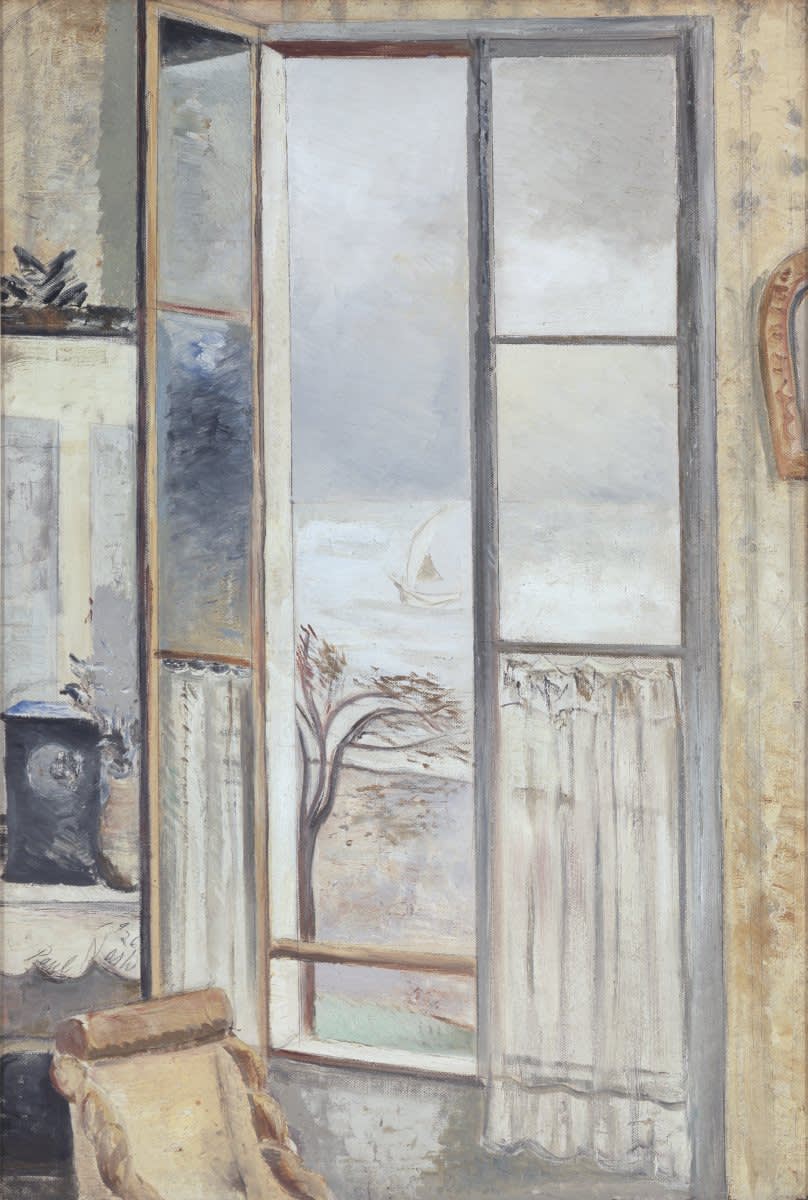Unlike so many artists who have gazed across the Seine and thought it a good idea to paint the bridges, the Louvre or Notre Dame, Paul Nash looked into the waters and found them sufficient matter for a picture.
InSight No. 138
Paul Nash | River and Trees, 1925

At 19 quai Voltaire in Paris stands the Hôtel du Quai Voltaire. Fronting onto the Seine and facing the Louvre across the river, it opened in the nineteenth century and since then artistes of many colours have found it an auspicious location from which to pen bon mots, write libretto, draw naked models or paint the view. Living in straitened times, Richard Wagner wrote a begging letter from the hotel in 1861 (he required of Baron Ferdinand von Hornstein 10,000 francs to ‘put my life in order’). Despite the relative penury in which he lived for the final eighteen months of his life, Oscar Wilde stayed there for a time. (Of his Paris sojourn he said, ‘I am dying beyond my means.’) In the autumn of 1906, Walter Sickert stayed long enough to make a series of drawings and paintings of the female nude. Baudelaire, Rilke, Sibelius, A.J.P. Taylor and Wyndham Lewis also visited at various times.

In December 1924 and January 1925, Paul Nash (1889—1946) and his wife Margaret also stayed at the hotel. They were en route to the French Riviera where they stayed in the town of Cagnes-sur-Mer between Antibes and Nice. In the south Nash enjoyed the warm weather and made pictures both inland and along the coast. During his Christmas visit to Paris, however, a picture such as River and Trees—one of four made at the time—indicates that the weather was grey and frigid. All four of Nash’s pictures show views from the bedroom window or somewhere close by.

A print by Nash’s Slade contemporary and fellow war artist C.R.W. Nevinson shows that in the twenties the Pont Royal and the adjacent Left Bank riverfront were screened with trees. In River and Trees, Nash adopted a raking downward perspective of the Seine. The nearside bank is cropped from view and much of the picture is animated by the icy waters of the river, which are interrupted by reflections of stunted bushes growing on the other side. These reflections were drawn with pencil hatching while highlights are suggested by negative marks made with a rubber, which crosshatch the pencil markings to suggest the movement of the water. Nash’s sights were set low and the Louvre, dominating the Right Bank, is cropped from view at the upper edge of the picture. The consequence of such selective viewing is to transform a portion of Paris’s riverfront into a calming pastoral.

Paris is a well-painted place and twenty years earlier Camille Pissarro made a painting from a similar position in the same hôtel. The differences between Pissarro and Nash’s efforts illustrate some of the key changes in pictorial art over the intervening period. In 1903, Pissarro placed the bridge in the centre of his picture, he viewed the Pavillon de Flore in profile and a couple of boats drift along the river; artistic energy was primarily invested in evoking atmospheric effects by granular accumulations of paint.

For Nash, composition and schemata were more active ingredients. The picture was rendered as a design covering the whole surface of the paper: the exaggerated mass of the bridge, achieved by foreshortening, is a robust buttress shoring up the left-hand edge; the large tree in the foreground throws a curving limb over the water towards the opposite bank. Although the draughtsmanship is motivated by observed effects of light and shade, contours are made angular and the mark-making is terse and linear. Whereas Pissarro worked under the auspices of a pictorial tradition that began in the Renaissance, Nash partook in the modernist project to remake the picture using new and sinewy forms of representation.

Although he was responsible for some of the most memorable and imaginative images of English landscape made in the twentieth century, Nash was an European artist for whom the landscapes of France were equally available as a source of inspiration and imagery. Aside from his flying visit to Paris and the subsequent work made in Cagnes in 1925, he made several works in Rouen in 1928 and his celebrated painting Harbour and Room (see InSight 121) was inspired by a visit to Toulon in 1930. Further pictures resulted from his visit to southern France and North Africa in 1934. Besides the lapping tide of the English Channel, the mysteries of Wittenham Clumps and Oxford’s dreaming spires, Nash found the icy waters of the Seine to be a similarly amenable subject.
Images
1. Paul Nash, River and Trees, 1925, pencil and chalk on paper, 15 x 22 1/2 in
2. Walter Sickert, Hôtel du Quai Voltaire, Paris, 1906, black and white chalk on buff paper, 23.5 x 30.5 cm
3. A view from the Hôtel du Quai Voltaire
4. C.R.W. Nevinson, Pont Royal, 1922, Private Collection
5. Camille Pissarro, The Pont Royal and the Pavilion de Flore, 1903, Petit Palais, Paris
6. Paul Nash, Riviera Window, Cros-de-Cagnes, 1926, Government Art Collection

